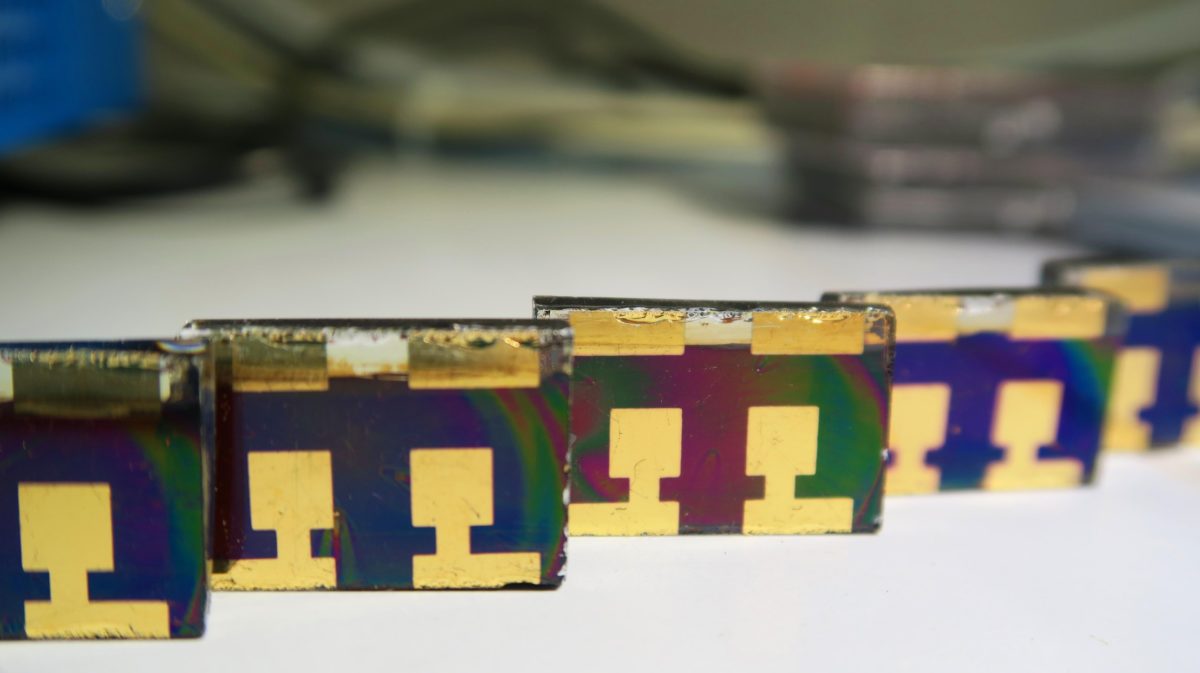Scientists led by Switzerland’s École Polytechnique Fédérale de Lausanne (EPFL) demonstrated a new deposition method for perovskite solar cells using formamidinium (FA) as the organic ‘a site’ of the structure.
The best performing perovskite solar cells to date have used methylammonium (MA) rather than FA. But the material is still of interest to scientists working on perovskite solar cells, and has shown potential for very high efficiencies. The problem, according to EPFL, is that below 150 degrees Celsius, the material transitions to a form that, while very stable, is not reactive to light.
To overcome this, the group developed an additional process step, where the cell materials – formamidinium lead triiodide, or FAPbI3 – are treated with a vapor of MA thiocyanate or FA thiocyanate. “This innovative tweak turns the photoinactive FAPbI3 perovskite films to the desired photosensitive ones,” state the scientists led by EPFL’s Michael Grätzel.
Vapor assist
Popular content
Their results are described in the paper Vapor-assisted deposition of highly efficient stable black-phase FAPbI3 perovskite solar cells, published in Science. The films treated with thiocyanate remained in the desired ‘pure black’ phase after 500 hours annealing at 85 degrees Celsius, while reference films not given the vapor treatment had lost most of their FA and formed lead-iodide after the same annealing.
The group went on to fabricate full solar cells from these films, the best performing of these had an initial efficiency of 23.1%. A cell with 21.4% initial efficiency was tested for 500 hours under ‘1-sun’ illumination, and shown to maintain just over 90% of its initial performance, which further recovered to 20.2%, or 94.4% of the initial value, after 12 hours ‘rest’ in a dark environment.
The group concludes that its work will be an important step in the development of stable, FA based perovskite solar cells. It also notes that the properties of the FAPbI3 film it was able to fabricate would make it potentially useful as an LED or photodetector.
This content is protected by copyright and may not be reused. If you want to cooperate with us and would like to reuse some of our content, please contact: editors@pv-magazine.com.



By submitting this form you agree to pv magazine using your data for the purposes of publishing your comment.
Your personal data will only be disclosed or otherwise transmitted to third parties for the purposes of spam filtering or if this is necessary for technical maintenance of the website. Any other transfer to third parties will not take place unless this is justified on the basis of applicable data protection regulations or if pv magazine is legally obliged to do so.
You may revoke this consent at any time with effect for the future, in which case your personal data will be deleted immediately. Otherwise, your data will be deleted if pv magazine has processed your request or the purpose of data storage is fulfilled.
Further information on data privacy can be found in our Data Protection Policy.